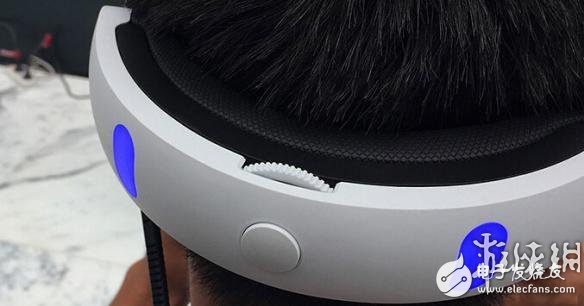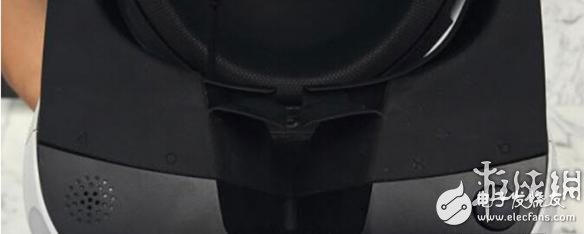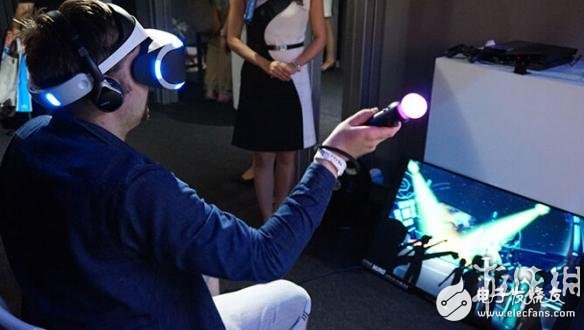PS VR glasses are good! But in the process of using it, it will inevitably encounter many problems! Such as PS VR blur, fog or even dizziness, etc., what is going on? Here is a small series for everyone to bring Come to some simple solutions.
 What should I do if the PS VR image is blurred?
What should I do if the PS VR image is blurred? Although the screen resolution of Sony VR is not high in virtual reality devices, many of the ambiguities are caused by the player not properly adjusting:
Myopia friends please wear glasses! Although the distance between VR glasses and the human eye is very close, but the specific imaging distance is because of the relationship between the convex lens and "pull away" (you can try to put the phone directly on the face for half an hour, the eyes are basically It’s good to say goodbye to the light, so wearing a myopia mirror is quite necessary for a clear picture. And Sony has also optimized for the friends wearing glasses, the experience is still quite comfortable.
Tightening the headband: The PS VR head display has a unique design on the fixed, you can adjust the tightness through the button on the back of the head. After wearing the head display, the player needs to fine-tune up and down until there is no ghosting phenomenon in front of the eyes and then tighten the button; the same is true when taking off, do not use brute force to take off - after all, hurting the brain or head is not a good ending.

Focus adjustment: PlayStaTIon VR supports focus adjustment, there is a small button below the head display, you can adjust to a clear position before and after pressing.

Adjusting the distance: I believe that all the friends who have been equipped with myopia have a certain understanding of the concept of distance. Unlike the external manual adjustments of the HTC Vive and Oculus Rift, the PSVR pitch is adjusted through the PlayStaTIon settings interface, and the effect varies from person to person, as long as the player adjusts to the most comfortable situation. Specific path: Settings interface -> Peripheral peripherals -> PS VR-> Adjust the distance.
Since most local tyrants start playing PS VR at home, unlike the professional guidance in the VR experience hall, it is normal to rush to play without paying attention to these details. If the player finishes these steps correctly, he still feels that the AV quality is in front of him. Please don't doubt life. At present, the VR technology at this price level is the same. It is not you.
How to solve the PS VR lens fog?Not only PlayStaTIon VR, but other VR devices will have similar problems. Due to normal breathing and sweat secretion, fog will condense on the lens in the closed moist eye mask. This phenomenon is in a hot environment and glasses-wearing players. May be more obvious. If you adjust the tightness many times and you can't solve this annoying problem, POPPUR recommends that you try the swimming goggle antifogging agent used by swimmers.

The hydrophilic molecules in the anti-fogging agent are capable of adsorbing moisture in the air and reducing its surface tension so that it cannot condense into small water droplets. I believe that the game environment of everyone is no worse than the swimming pool, so the effect of this artifact in anti-fog is unquestionable. However, the swimming friend said that the saliva can be used, Xiaobian is not convenient to personally demonstrate, players who have a good mouth can try it, and then share the effect in the comment area is better.
Method for solving PS VR vertigo
In the "Driving Club", "Mechanical Alliance" and other games, due to the high-speed moving picture combined with the virtual reality slag image quality, many players directly fainted within a few minutes. Although this pot of imperfect VR technology has to be backed up, it has a certain relationship with whether or not I adapt.
It turns out that ginger, wind oil and other motion sickness essential items can effectively alleviate the symptoms, and reduce the virtual immersion can also reduce the degree of dizziness. You can not try to miss the excellent game friends. In case it is still dizzy, let's rest, VR is cool, but it is still life! Don't be easy for big manufacturers to solve the problem, you bloody players have been fainted to find the North!
Small computer system interface (SCSI) is an independent processor standard for system level interfaces between computers and intelligent devices (hard disks, floppy drives, optical drives, printers, scanners, etc.). SCSI is an intelligent universal interface standard.
SCSI-3
In 1995, the more high-speed SCSI-3, called ultrasci, was born, and the data transmission rate reached 20MB / s. It increases the synchronous transmission clock frequency to 20MB / s and improves the data transmission rate. If 16 bit wide mode is used, the data transmission rate can be increased to 40MB / s. This version of SCSI uses a 68 pin interface, which is mainly used on hard disks. The typical characteristic of SCSI-3 is that the bus frequency is greatly increased and the signal interference is reduced to enhance its stability.
There are many models of SCSI-3. Ultra (FAST-20) has a transmission frequency of 20MHz, a data bandwidth of 8 bits and a transmission rate of 20MBps
Ultra wide has a transmission frequency of 20MHz, a data bandwidth of 16 bits and a transmission rate of 40mbps
The transmission frequency of ultra 2 is 80 MHz, the data bandwidth is 16 bits, and the transmission rate is 80 Mbps
The transmission frequency of ultra 160 is 80 MHz, the data bandwidth is 16 bits, and the transmission rate is 160 Mbps
The transmission frequency of ultra 320 is 80MHz, the data bandwidth is 16 bits, and the transmission rate is 320mbps
The transmission frequency of ultra 640 is 160MHz, the data bandwidth is 16 bits, and the transmission rate is 640mbps
Plastic SCSI Cover
ShenZhen Antenk Electronics Co,Ltd , https://www.antenk.com
